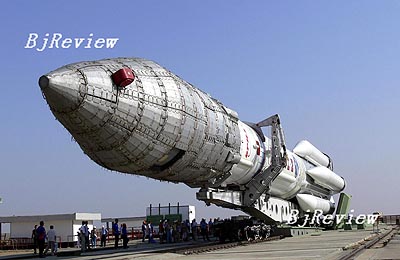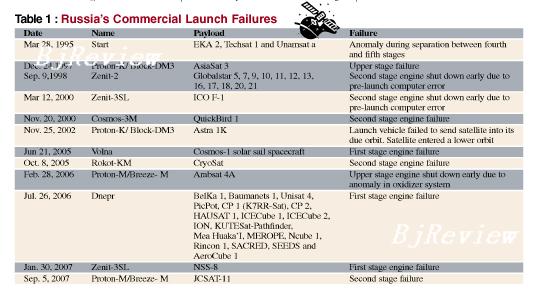|

A Russian Proton rocket blasted off from the Baikonur Cosmodrome in Kazakhstan in early September. It was scheduled to enter the geostationary transfer orbit after seven hours of flight. But the second stage of the rocket failed 139 seconds after the launch, causing the JCSAT-11 satellite it carried to crash.
The satellite, designed to provide TV broadcast and telecommunications services, was the first Japanese commercial satellite launched atop a Proton rocket. According to the rental agreement between Russia and Kazakhstan for the Baikonur Cosmodrome, Kazakhstan said it would suspend Proton launches from the space launch facility until everything was resolved. Initial investigations showed that the cause of the rocket failure could have been a steering mechanism failure.
The Proton rocket that flew the mission was Proton M, an improved version of the Proton, developed by the Khrunichev State Research and Production Space Center. It can deliver a payload of 21 tons into the low-earth orbit at a 51.6 degree incline or a payload of 5.5 tons into the geostationary transfer orbit, or send the payload directly into the geostationary orbit with a Breeze M upper stage. The Proton, operated by the International Launch Services Inc. (ILS), is Russia's first commercial launch vehicle. ILS was jointly founded in 1995 by the Khrunichev State Research and Production Space Center and Lockheed Martin Corporation of the United States. Since it hit the commercial launch market in the same year, the Proton has made 42 space flights, four of which were failures. Apart from the one in September, the other three mishaps in 1997, 2002 and 2006, respectively, were all caused by upper-stage engine failure.
Despite the problems that the Proton has encountered in recent years, Russia's important status in the international commercial launch market is not to be questioned. Russia is one of the first countries in the world to enter this market. The Soviet Union made the Proton commercially available in 1983 in an effort to cash in on its launch vehicle production excess. However, at the time of the Cold War, Western countries led by the United States were worried that the Soviet Union might steal their sophisticated satellite technology if they commissioned it to launch satellites. As a result, Soviet Union's plan failed to materialize.
After the disintegration of the Soviet Union, Russia's budget for the space industry dropped dramatically. In order to maintain its status as a space power, Russia readily cooperated with other countries to make the most of its space technology prowess. It has signed agreements with several Western countries to jointly market its launch vehicles since 1995, thereby carving a niche in the international commercial launch market.
The Proton made its maiden commercial flight from the Baikonur Cosmodrome on April 9, 1996, when it delivered the European broadcast satellite Astra 1F built by Hughes Network Systems LLC of the United States into the geostationary transfer orbit.
A diversified fleet
Apart from the Proton, Russia has also put the Rokot, the Soyuz, the Comos, the Start, the Zenit, the Dnepr, the Shtil and the Volna into the international commercial launch market through its own marketing channels or in collaboration with European and U.S. companies. To date, Russia has conducted 124 commercial launches, 12 of which were failures (see Table 1), registering a success rate of 90.3 percent. Now Russia occupies an important place in the international commercial launch market. In recent years, in particular, the number of Russia's commercial launches has increased considerably. Russia's commercial launches have surpassed those of the United States for two successive years, currently ranking first in the world.

Most of Russia's commercial launch vehicles are converted from intercontinental ballistic missiles. Only a small number of them are exclusively designed to launch satellites. By turning missiles into satellite launchers, Russia has been able to cut launch costs while improving the reliability of its launch vehicles, thus placing itself in an advantageous position when
|
